Lisbon, the capital city of Portugal, is a captivating destination that effortlessly blends its rich history with a vibrant modern atmosphere. Located on the western coast of the Iberian Peninsula, where the Tagus River meets the Atlantic Ocean, Lisbon has long been a hub of cultural, economic, and maritime significance. With its sun-drenched hills, intricate tiled facades, and narrow winding streets, the city exudes a unique charm that enchants visitors from all over the world.
Accommodation
I booked my accommodation close to the Avenida Da Liberdade. It is a very central place so you have most of the sights in walking distance. Also good districts are Baixa, Alfama, Bairro Alto / Chiado.
Public transportation
Lisbon has a very good transportation system. I very heavily used the metro. There are 4 lines where I used 3 of them (blue, green, red (airport to the city)). Furthermore you can take the tram (very famous is the line 28), a Tuk Tuk, the bus, a ferry (to get to the other side of the river), taxi and uber.
Food
Pastéis de Nata, also known as Portuguese custard tarts, are delectable and iconic sweet treats that have captured the hearts of pastry enthusiasts around the world.
These small, golden pastries are characterized by their crisp, flaky pastry shells and luscious, creamy custard fillings.
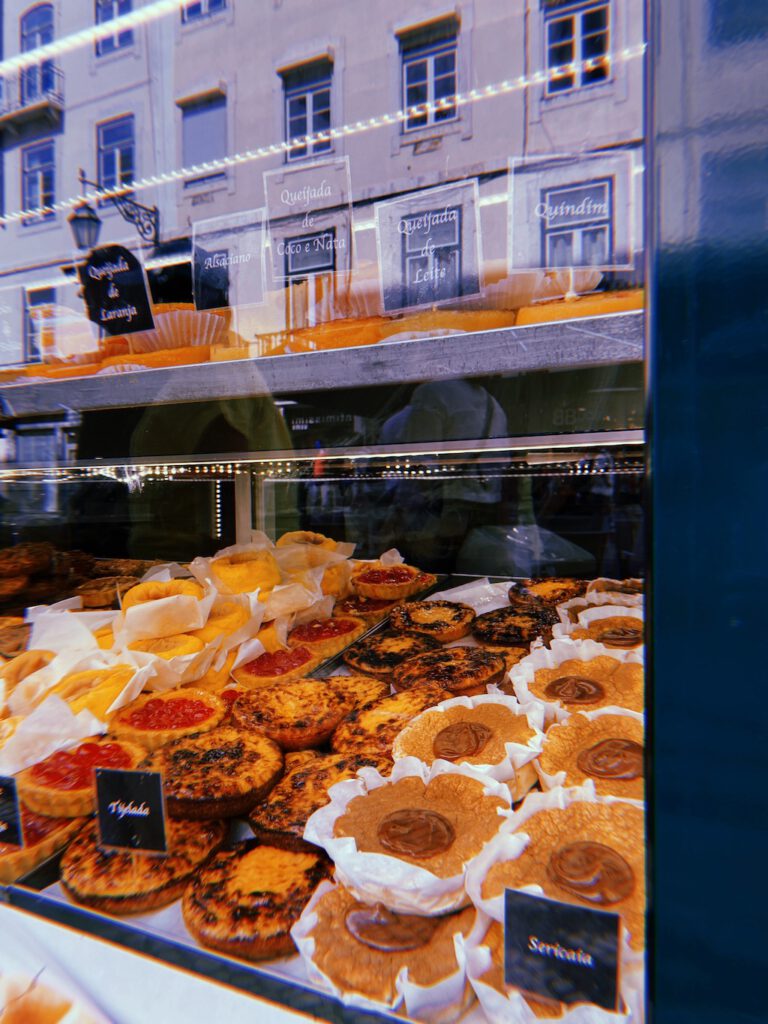
Sightseeing
Whether you are drawn to its historical significance, cultural vibrancy, gastronomic delights, or scenic landscapes, Lisbon offers an enchanting blend of old-world charm and modern allure.
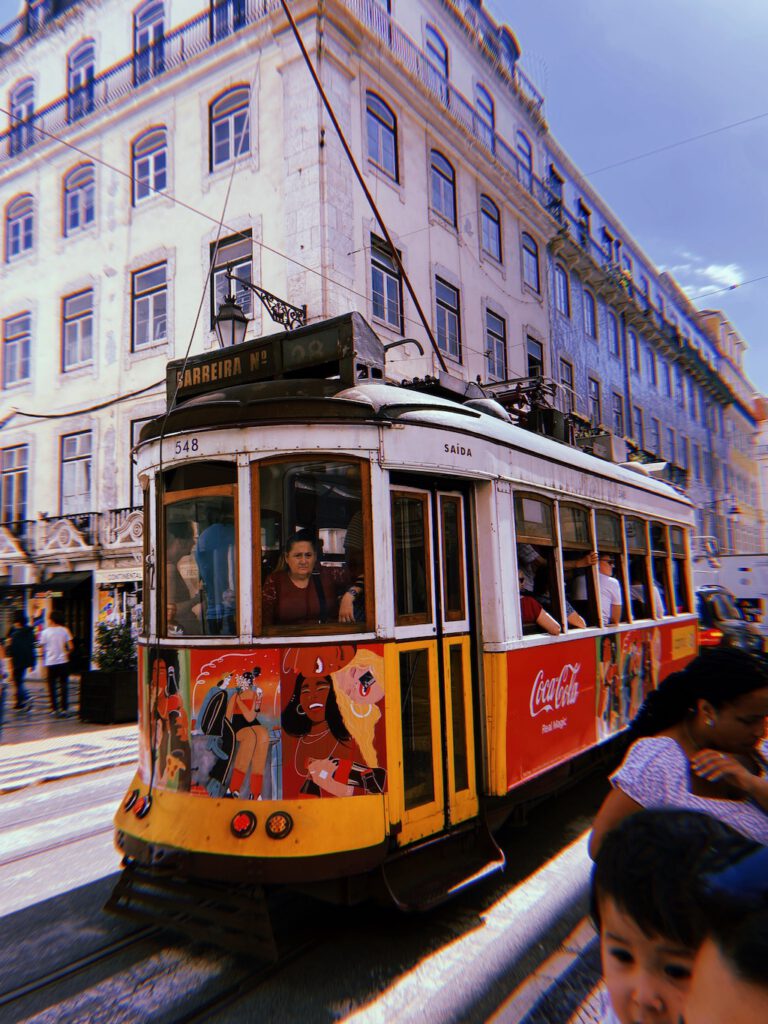
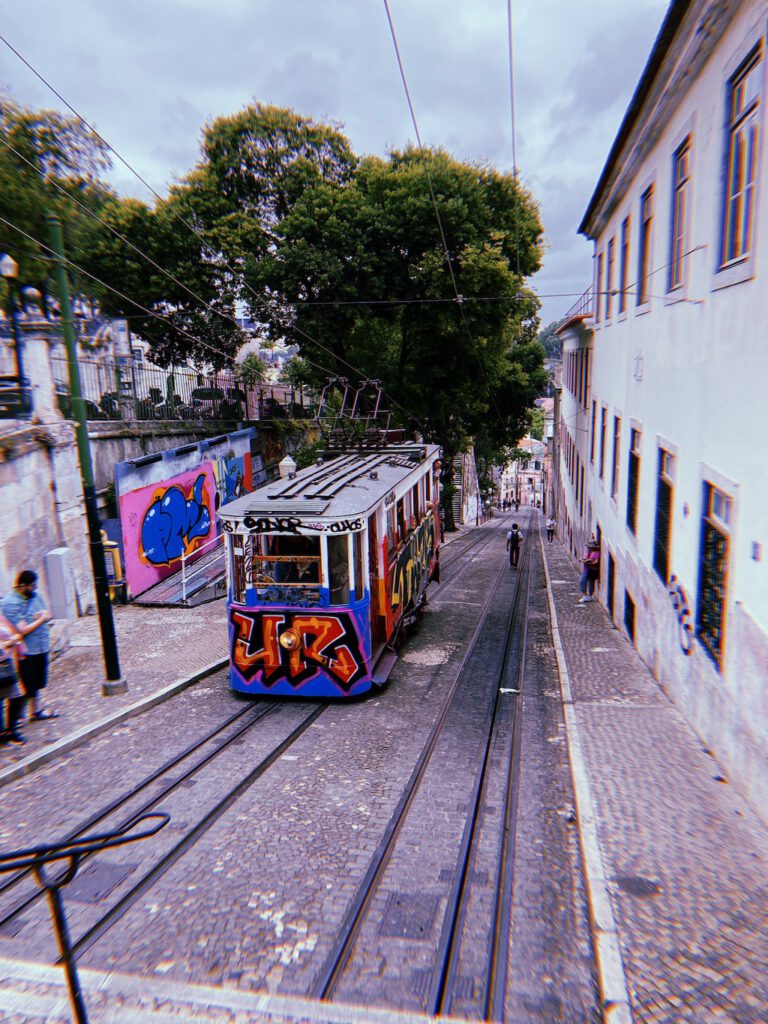
With its warm and welcoming atmosphere, the city embraces visitors with open arms, inviting them to immerse themselves in its captivating tapestry of sights, sounds, and flavors. Exploring Lisbon is a journey that promises to captivate the senses and leave an indelible mark on all who wander its charismatic streets.
Avenida Da Liberdade, 1250-135 Lisbon, Lisbon, Portugal
Parque Eduardo VII, Pq. Eduardo VII, Lisbon, Lisbon 1050-251, Portugal
Miradouro de São Pedro de Alcântara, R. de São Pedro de Alcântara, Lisbon, Lisbon 1250-238, Portugal
Rua Viriato 25b, 1050-234 Lisbon, Lisbon, Portugal
Bairro Alto Hotel, Pç. Luís de Camões, 2, Lisbon, Lisbon 1200-016, Portugal
Tram 28, Lisbon, Lisbon 1100-341, Portugal
Igreja de Santa Maria Maior de Lisboa, Largo da Sé, Lisbon, Lisbon 1100-585, Portugal
Elevador de Santa Justa, Lg. do Carmo / R. do Ouro, Lisbon, Lisbon 1200-290, Portugal
Rossio, Pç. Dom Pedro IV, Lisbon, Lisbon 1250-187, Portugal
Panteáo nacional, Lisbon, Lisbon 1100-471, Portugal
Castelo de São Jorge, R. da Costa do Castelo, Lisbon, Lisbon 1100-181, Portugal
Alfama, Lisbon, Lisbon 1100-543, Portugal
Rua Augusta Arch, R. Augusta, Lisbon, Lisbon 1100-055, Portugal
Monument to the discoveries, Lisbon, Lisbon, Portugal
Palacio Nacional da Ajuda, Lisbon, Lisbon, Portugal
Praça Do Comércio, 1100-150 Lisbon, Lisbon, Portugal
Cais Do Sodré, 1200-370 Lisbon, Lisbon, Portugal
Time Out Market Lisboa, Avenida 24 de Julho, 49, Lisbon, Lisbon 1200-480, Portugal
Praça do Império, Praça do Império, Lisbon, Lisbon 1300-598, Portugal
Torre de Belém, Av. da Índia, Lisbon, Lisbon 1400-038, Portugal
Praia de Carcavelos, Av. Marginal, Lisbon 2775-561, Portugal
Costa da Caparica, Setúbal, Portugal
Praça Do Comércio / Comércio Square + Columns Pier
I started my exploration of the city at the Comércio Square. Located at the heart of Lisbon, Comércio Square (Praça do Comércio) is a magnificent public square that stands as one of the city’s most iconic landmarks. Steeped in history and grandeur, this sprawling square serves as a gateway to Lisbon’s rich past and offers visitors an unforgettable glimpse into the city’s architectural splendor and vibrant atmosphere.
Situated at the edge of the Tagus River, Comércio Square is a vast open space surrounded by elegant yellow-colored buildings adorned with neoclassical facades. The square’s centerpiece is the grand triumphal arch, known as the Arco da Rua Augusta, which proudly stands as a symbol of Lisbon’s historical significance and welcomes visitors into the heart of the city.
Close to the Comércio Square is the Columns Pier. Columns Pier continues to be a bustling and vibrant area, where locals and tourists alike gather to enjoy the panoramic views of the river and the city’s picturesque skyline. The pier’s wide granite steps provide a perfect vantage point for visitors to soak in the beauty of the Tagus River, watch boats sail by, and marvel at the iconic 25 de Abril Bridge that spans its width.
Rua Augusta Arch
In front of the square is also a very impressive building that looks a little bit like the Arc de triomphe in Paris.
The Rua Augusta Arch, also known as the Arco da Rua Augusta, is a magnificent monument that marks the entrance to Lisbon’s bustling pedestrian street, Rua Augusta. Designed by architect Santos de Carvalho, the arch was completed in 1873 and stands as a tribute to Portugal’s glorious past and its connection to the rest of the world.
Once you pass through the arch, you’ll find yourself on Rua Augusta, a vibrant and lively street lined with shops, restaurants, cafés, and street performers. It serves as a vibrant hub for locals and visitors alike, offering a delightful mix of retail therapy, delectable cuisine, and a bustling atmosphere.
Castelo de São Jorge
Next, I wanted to take a look over the city, so I went to the Castel de São Jorge in the Alfama district. To get in you have to pay a entrance fee.
The Castelo de São Jorge, or Castle of São Jorge, stands proudly atop one of Lisbon’s highest hills, offering a commanding presence and panoramic views over the city. This ancient fortress is a symbol of Lisbon’s rich history and has played a significant role in shaping the destiny of the city.
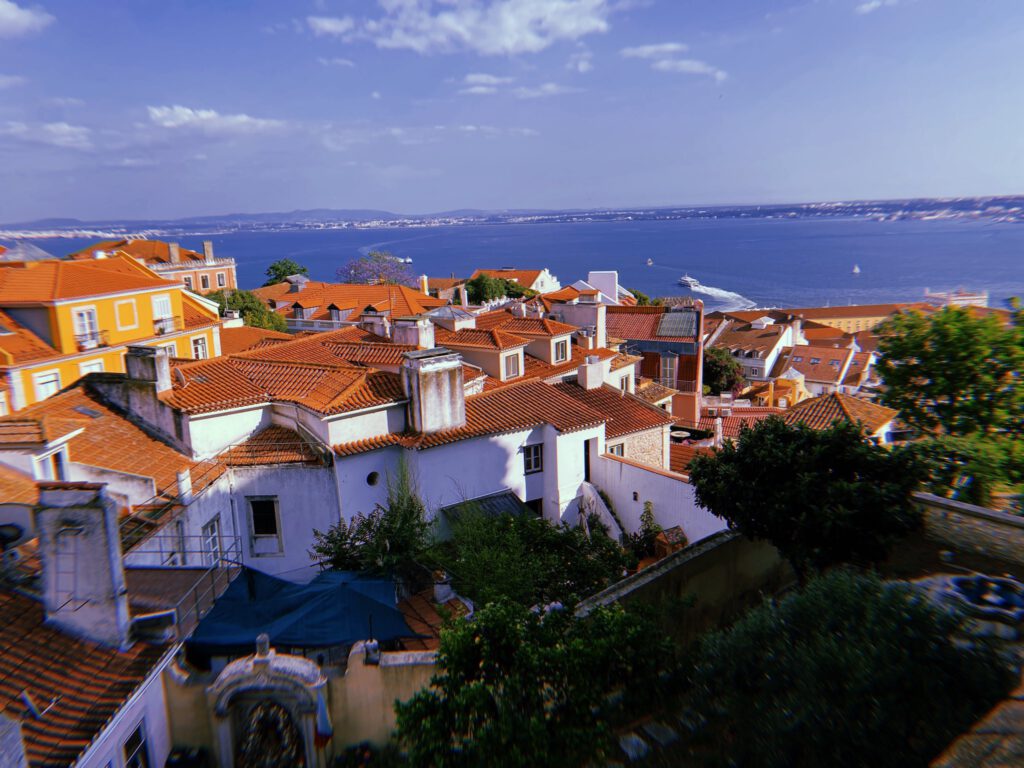
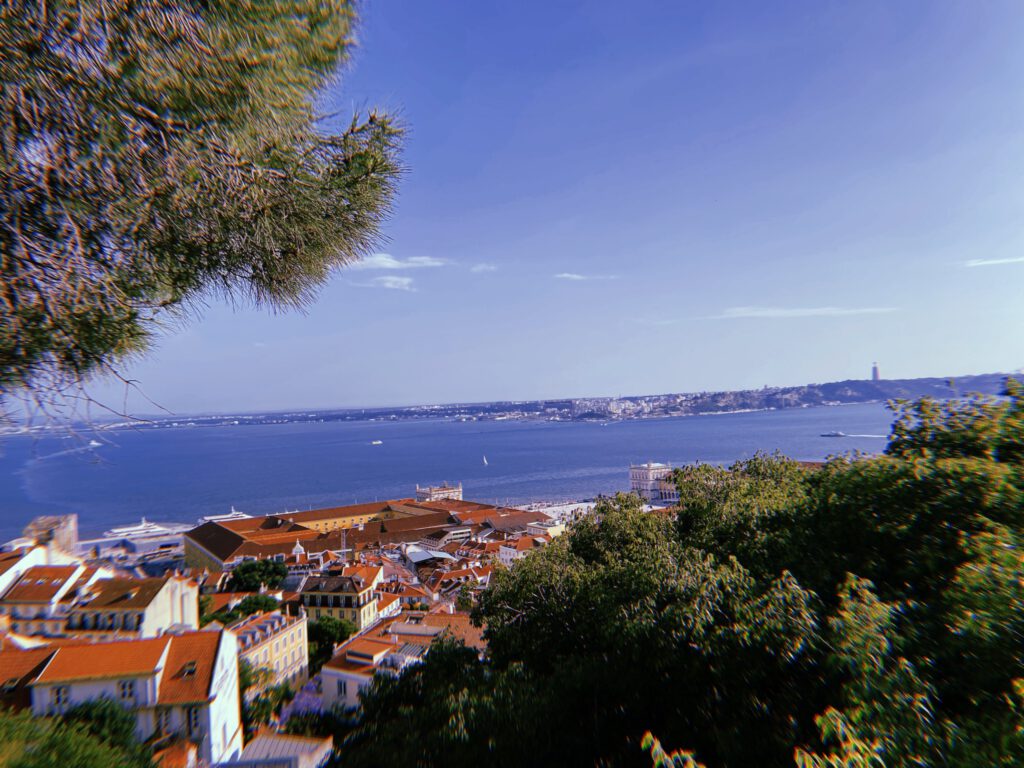
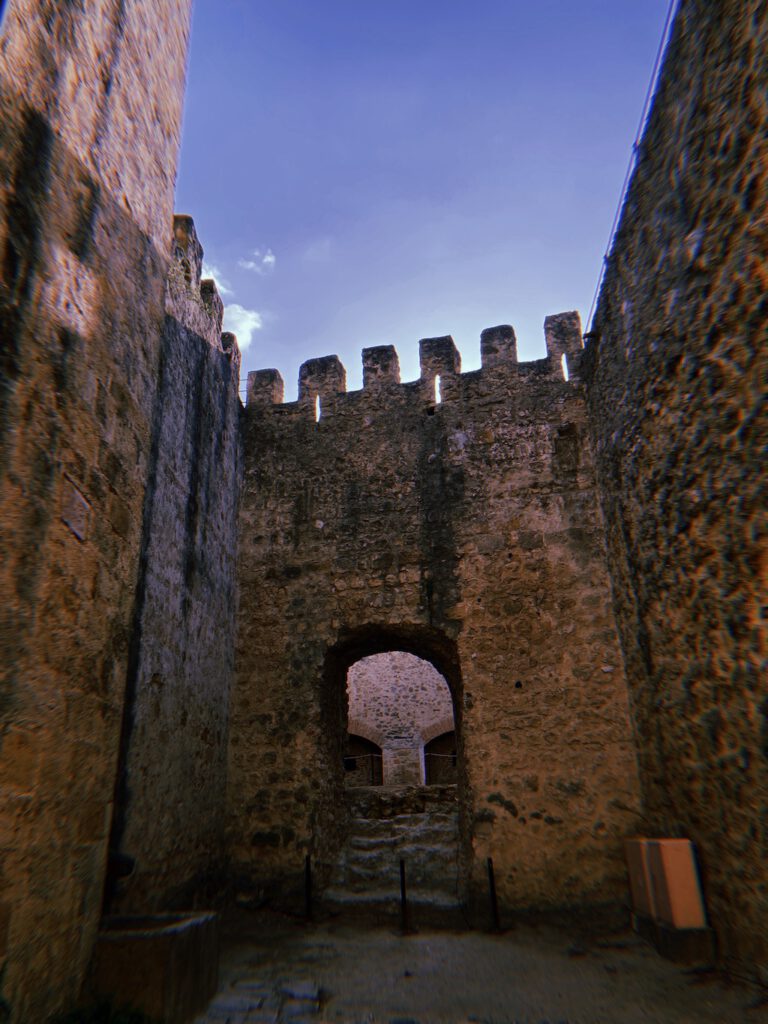
Perched on the hill of São Jorge, the castle’s origins date back to the 5th century when it was built by the Moors as a defensive structure.
Today, the Castelo de São Jorge stands as a popular tourist attraction, inviting visitors to explore its historical significance and experience the captivating charm it holds within its walls. As one walks through the castle’s gates, they are transported back in time, discovering remnants of ancient ruins, picturesque gardens, and panoramic viewpoints that offer breathtaking vistas of Lisbon’s rooftops, the Tagus River, and beyond.
Cathedral Lisbon
Cathedral of Lisbon, also known as Sé de Lisboa. Located in the charming Alfama district, this ancient and awe-inspiring cathedral stands as a testament to the city’s rich religious heritage and architectural grandeur.
The Cathedral of Lisbon holds a significant place in the city’s history, dating back to its construction in the 12th century. Over the centuries, it has witnessed the ebb and flow of time, surviving earthquakes, fires, and reconstructions, while retaining its sacred beauty and spiritual significance.
You have to pay a entrance fee to get inside.
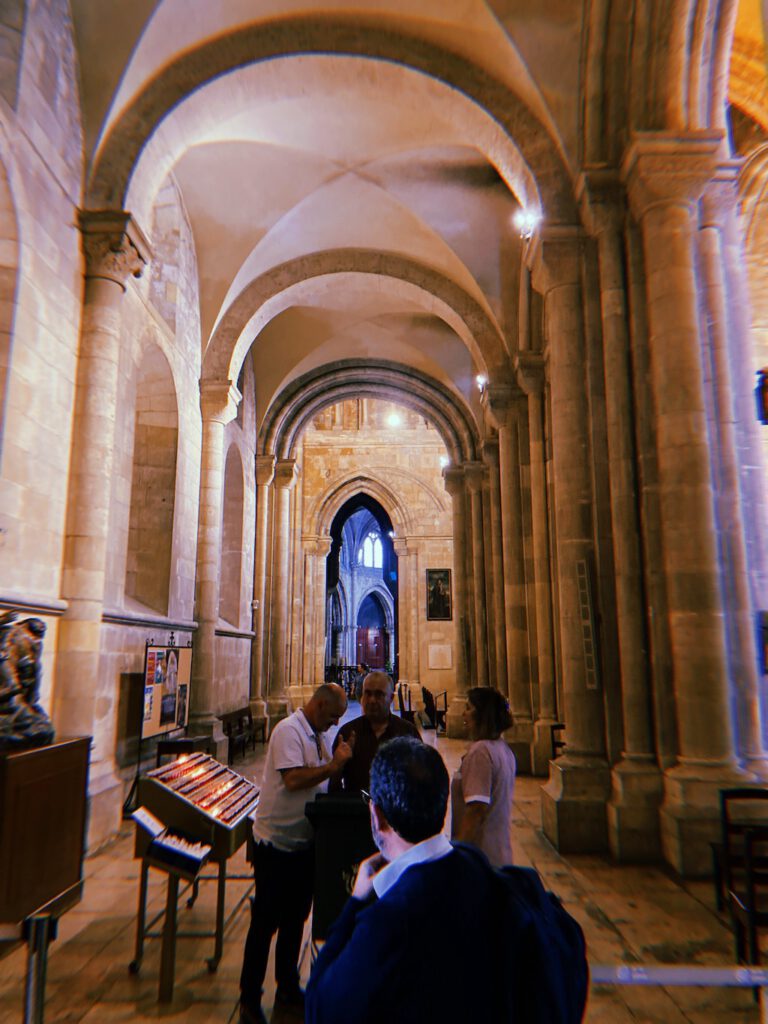
Palacio Nacional da Ajuda
The Palácio Nacional da Ajuda, located in Lisbon, Portugal, is a grand palace that showcases opulent architecture, rich history, and exquisite royal collections. Situated on a hill overlooking the city, this neoclassical palace stands as a testament to Portuguese royalty and offers visitors a captivating glimpse into the country’s regal past.
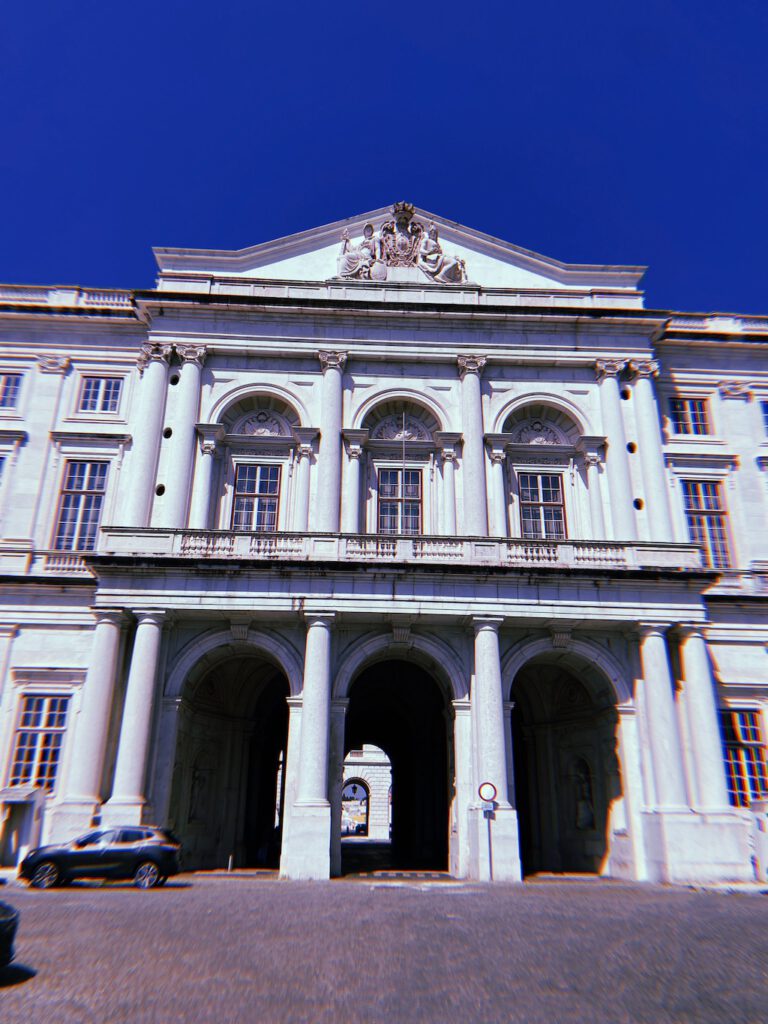
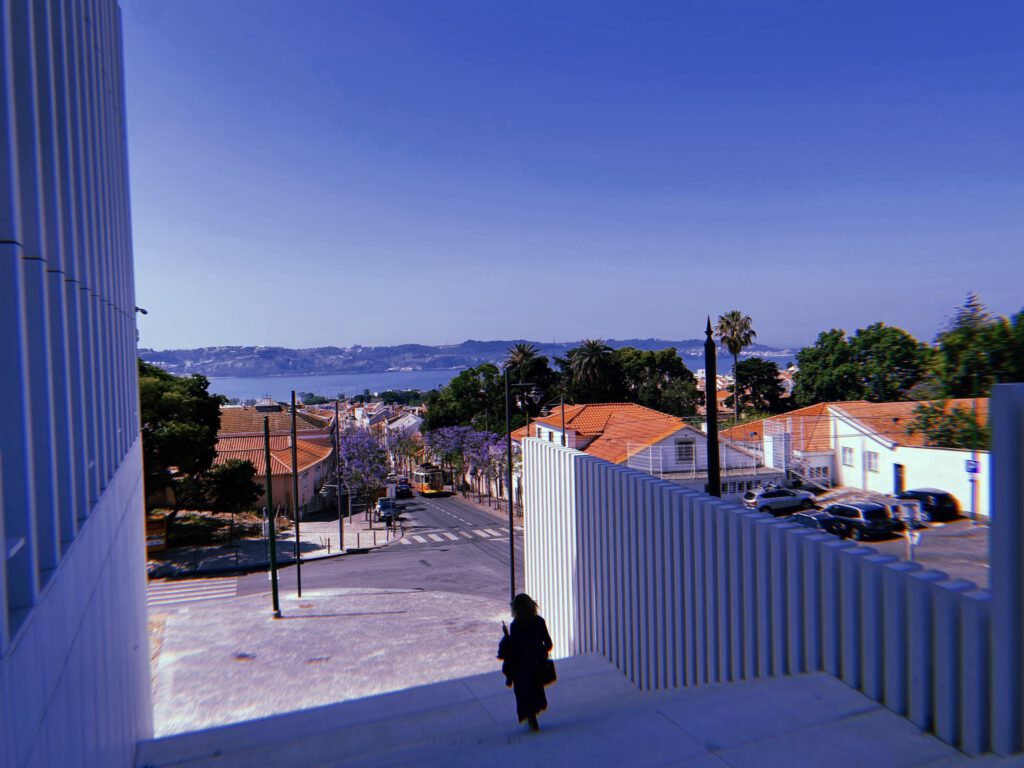
Originally intended to be a royal residence, construction of the Palácio Nacional da Ajuda began in the 19th century but was never fully completed. Nevertheless, the palace’s grandeur and luxurious design have made it an impressive architectural gem. Its ornate façade, adorned with intricate detailing and elegant columns, immediately captivates the eye and hints at the opulence found within.
Today, the palace serves as a museum, providing visitors with a unique opportunity to explore its lavishly decorated rooms and admire the royal collections on display. The interior showcases exquisite furnishings, impressive works of art, and intricate tapestries, offering a glimpse into the royal lifestyle of the Portuguese monarchy.
You have to pay entrance fee for the museum. I would only recommend visiting the palace at all if you have time left.
Take the bus 760 from Cais Do Sodré.
Mosteiro dos Jerónimos + Praça do Império
The Mosteiro dos Jerónimos, or Jerónimos Monastery, is a magnificent architectural masterpiece located in Lisbon, Portugal. This UNESCO World Heritage site is not only a symbol of Portugal’s rich history and maritime glory but also a testament to the country’s architectural prowess.
Built in the 16th century, the monastery stands as a remarkable example of Manueline architecture, a distinctive Portuguese style characterized by intricate ornamentation, maritime motifs, and a fusion of Gothic and Renaissance elements.
Today, the Jerónimos Monastery welcomes countless visitors who come to marvel at its exquisite architecture and immerse themselves in Portugal’s illustrious past. The monastery also houses the Museu Nacional de Arqueologia (National Archaeology Museum), which showcases a remarkable collection of artifacts and exhibits that trace the country’s history from prehistoric times to the present.
Monument to the discoveries / Padrão dos Descobrimentos
The Monument to the Discoveries, or Padrão dos Descobrimentos, is an iconic landmark situated along the Tagus River in Lisbon, Portugal. This magnificent structure pays tribute to the intrepid Portuguese explorers who played a pivotal role in the Age of Discovery, expanding the horizons of European knowledge and opening new routes to the world.
Built in 1960 to commemorate the 500th anniversary of the death of Prince Henry the Navigator, the monument stands tall and proud, resembling the prow of a ship. Its striking design, crafted in the shape of a caravel, is a powerful symbol of Portugal’s maritime heritage and the spirit of exploration that defined the nation’s history.
The Monument to the Discoveries features a massive sculpture that portrays several prominent figures from the Age of Discovery, including navigators, cartographers, missionaries, and monarchs. At the forefront stands Henry the Navigator, who played a vital role in initiating Portugal’s maritime expeditions.
Flanking him are other notable figures such as Vasco da Gama, Ferdinand Magellan, and Bartolomeu Dias, among others, who left an indelible mark on the world through their bold voyages.
Belém Tower / Torre de Belém
The Torre de Belém, or Belém Tower, stands proudly on the banks of the Tagus River in Lisbon, Portugal. This historic fortress is a UNESCO World Heritage site and a symbol of Portugal’s maritime past. Built in the 16th century, the tower served as a defense structure, a ceremonial gateway, and a symbol of Portugal’s global influence during the Age of Discovery.
The Torre de Belém is an architectural masterpiece, combining elements of Moorish, Gothic, and Manueline styles. Its distinctive design features ornate stone carvings, delicate lace-like balconies, and sturdy bastions, creating a visually stunning fortress that stands as a testament to the country’s artistic and engineering prowess of the time.
Visitors to the tower can explore its various levels, each offering a unique perspective on its history and purpose. The ground floor showcases the imposing defense mechanisms, including gunports and cannon embrasures, highlighting the tower’s role in protecting the city from potential threats. The upper levels reveal beautifully decorated chambers, including the Governor’s Hall and the King’s Chamber, adorned with intricate details and magnificent views of the river and the surrounding area.
Elevador de Santa Justa
The Elevador de Santa Justa, or Santa Justa Lift, is an iconic landmark in Lisbon, Portugal, that offers both practical transportation and breathtaking panoramic views of the city. This vertical lift, located in the heart of the city, connects the lower streets of Baixa with the higher neighborhood of Carmo, bridging the gap between the two levels with elegance and charm.
Saving tip: Or just take the stairs a few streets away to reach Carmo neighborhood. 🙂
Designed by Raoul Mesnier du Ponsard, a disciple of Gustave Eiffel, the Santa Justa Lift was inaugurated in 1902. Its striking iron structure, reminiscent of the Eiffel Tower, stands as a testament to Lisbon’s architectural and engineering prowess of the time. The lift’s neo-Gothic style, adorned with intricate filigree work and decorative motifs, adds a touch of romanticism to the city’s skyline.
Miradouro de São Pedro de Alcântara
The Miradouro de São Pedro de Alcântara is a picturesque viewpoint located in Lisbon, Portugal, that offers stunning panoramic views of the city. Nestled in the Bairro Alto neighborhood, this popular miradouro provides a tranquil escape from the bustling streets below, inviting visitors to pause and appreciate the beauty of Lisbon’s landscape.
The Miradouro de São Pedro de Alcântara is situated in a charming park adorned with manicured gardens, fountains, and statues. The viewpoint is named after the nearby São Pedro de Alcântara Church, which adds to the serene ambiance of the area. As visitors ascend the terraced gardens, they are rewarded with breathtaking vistas that stretch across the city.
From this elevated vantage point, one can marvel at the red rooftops of Lisbon’s historic districts, the winding Tagus River, and the grandeur of iconic landmarks such as the São Jorge Castle and the Ponte 25 de Abril bridge.
National Pantheon / Panteáo nacional
The Panteão Nacional, or National Pantheon, is a magnificent monument located in Lisbon, Portugal, that serves as the final resting place for some of the country’s most illustrious figures. This imposing structure, originally a church, was repurposed in the 20th century to honor prominent Portuguese personalities who have made significant contributions to the nation’s history, culture, and society.
The National Pantheon is situated in the historic Alfama district and dominates the skyline with its impressive dome. Its architectural style is a blend of Baroque and Neoclassical elements, and its grandeur is evident both inside and out. The exterior features intricate stone carvings, elaborate facades, and a majestic dome that can be seen from various vantage points throughout the city.
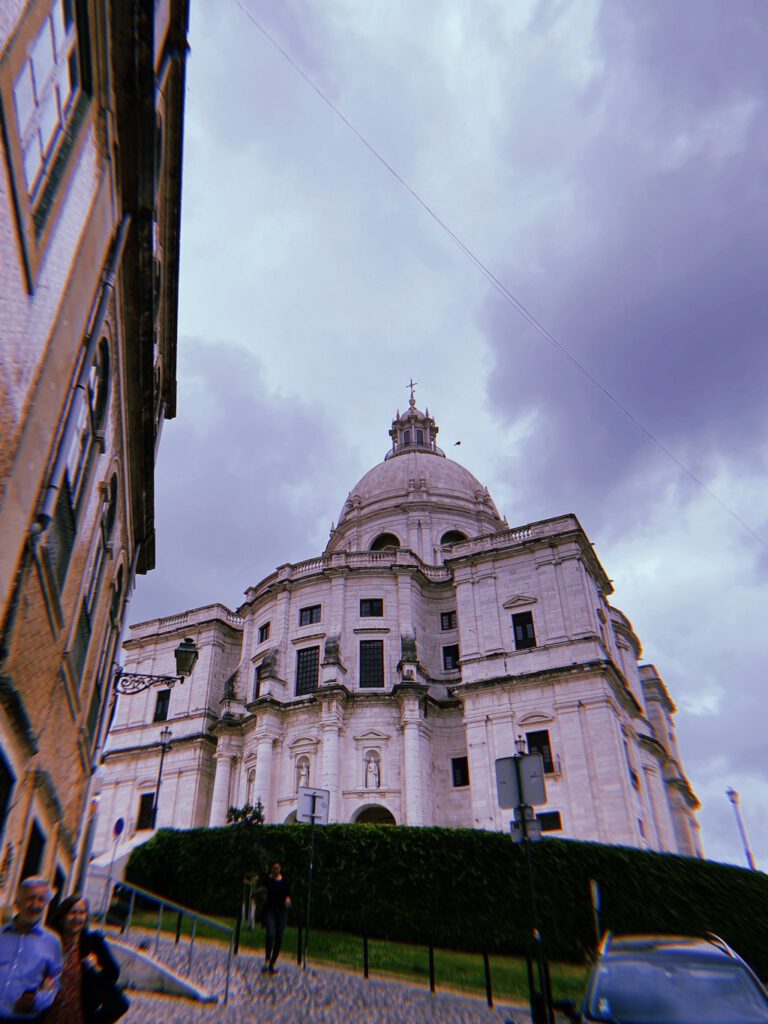
District Alfama
The district of Alfama in Lisbon, Portugal, is a vibrant and historic neighborhood that captures the essence of the city’s ancient roots. Nestled on a hillside, Alfama is a maze of narrow winding streets, alleys, and staircases, creating a charming and enchanting atmosphere that transports visitors back in time.
Alfama is known as the oldest district in Lisbon, with its origins dating back to the Moorish period. It has managed to preserve its medieval layout and character, making it a fascinating place to explore. As one ventures through its labyrinthine streets, they will encounter colorful tiled buildings, quaint squares, and picturesque viewpoints that offer breathtaking panoramas of the city and the Tagus River.
One of the defining features of Alfama is its strong sense of community and traditional way of life. It is a neighborhood where locals still hang their laundry from their windows, where residents gather in neighborhood cafés, and where the sound of fado, Portugal’s soulful music, echoes through its narrow streets. The district is also known for its traditional festivals and celebrations, such as the popular Santo António Festival in June, which fills the streets with music, dance, and vibrant processions.
Alfama is home to several iconic landmarks, including the Lisbon Cathedral (Sé de Lisboa), a majestic Romanesque cathedral that has stood for centuries, and the Castelo de São Jorge,
Food Market / Events
Time Out Market Lisboa
The Time Out Market Lisboa is a vibrant and bustling culinary destination located in Lisbon, Portugal. Situated in the historic Mercado da Ribeira, this food hall brings together a diverse selection of gourmet cuisine, offering visitors a unique and immersive gastronomic experience.

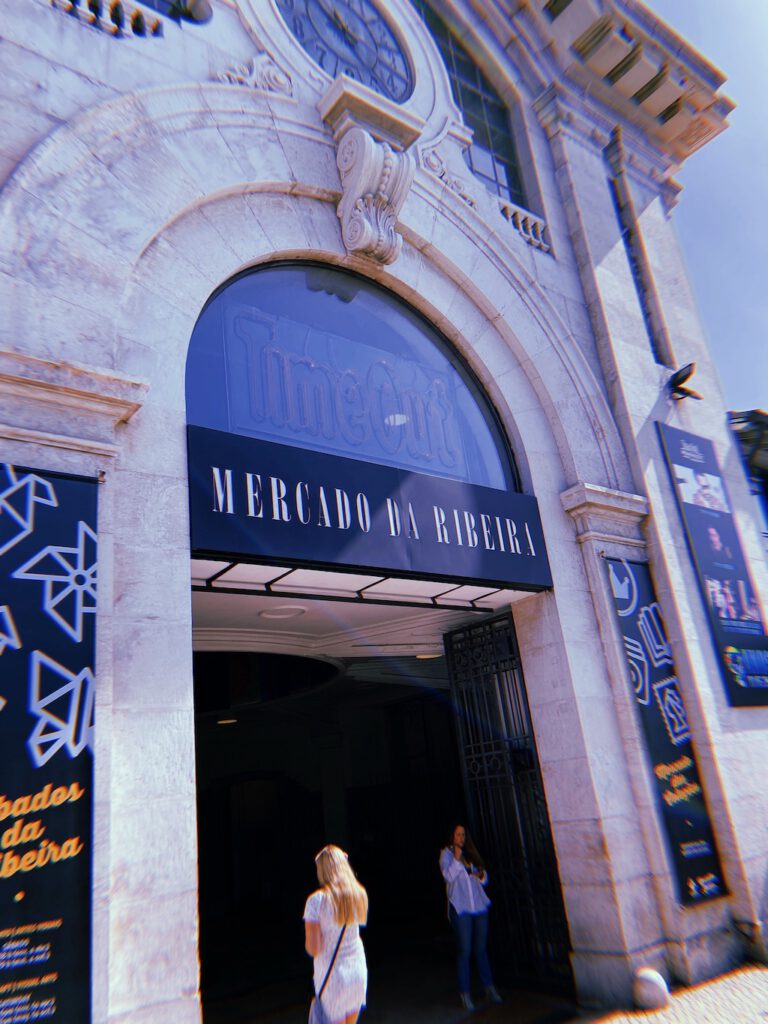
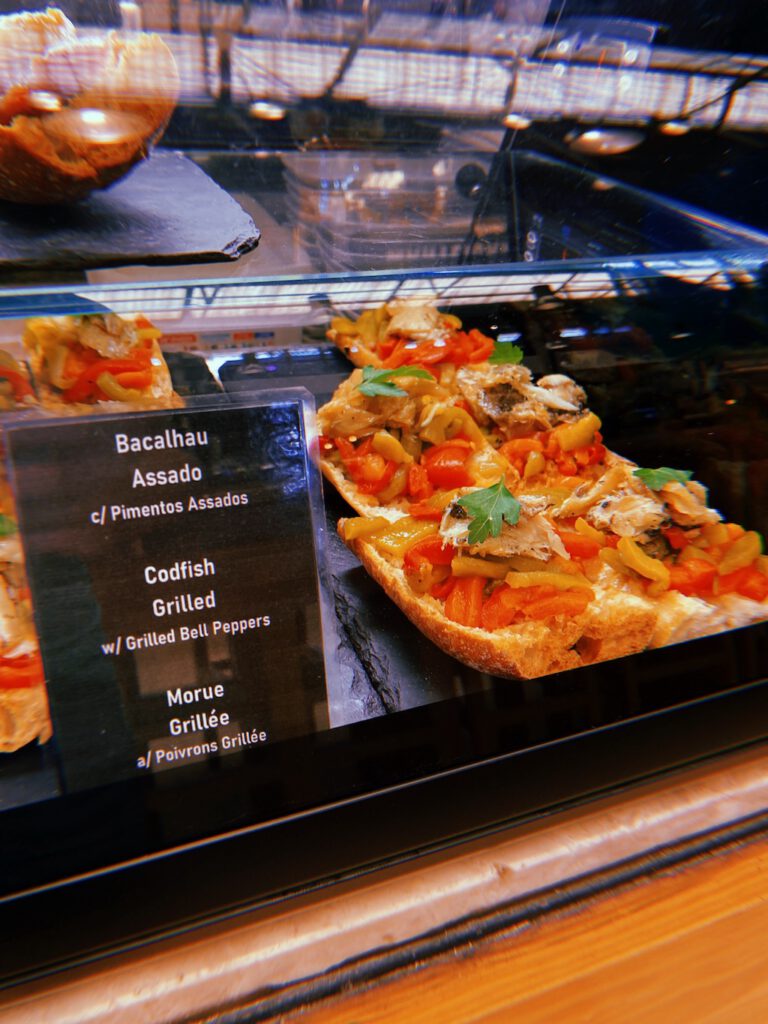

Mercado Primavera Rossio / ROSSIO SPRING MARKET
During my stay in Lissabon there was a market at the rossio square. There were a lot of lovely market stands where you can by some food, drinks or selfmade products.
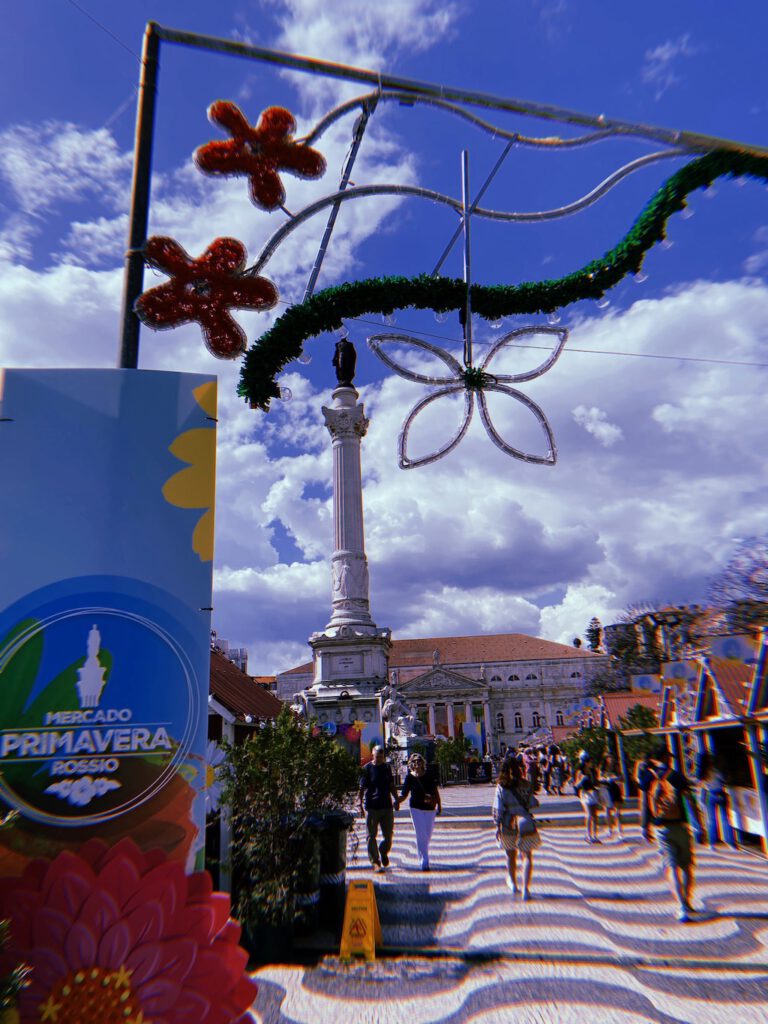
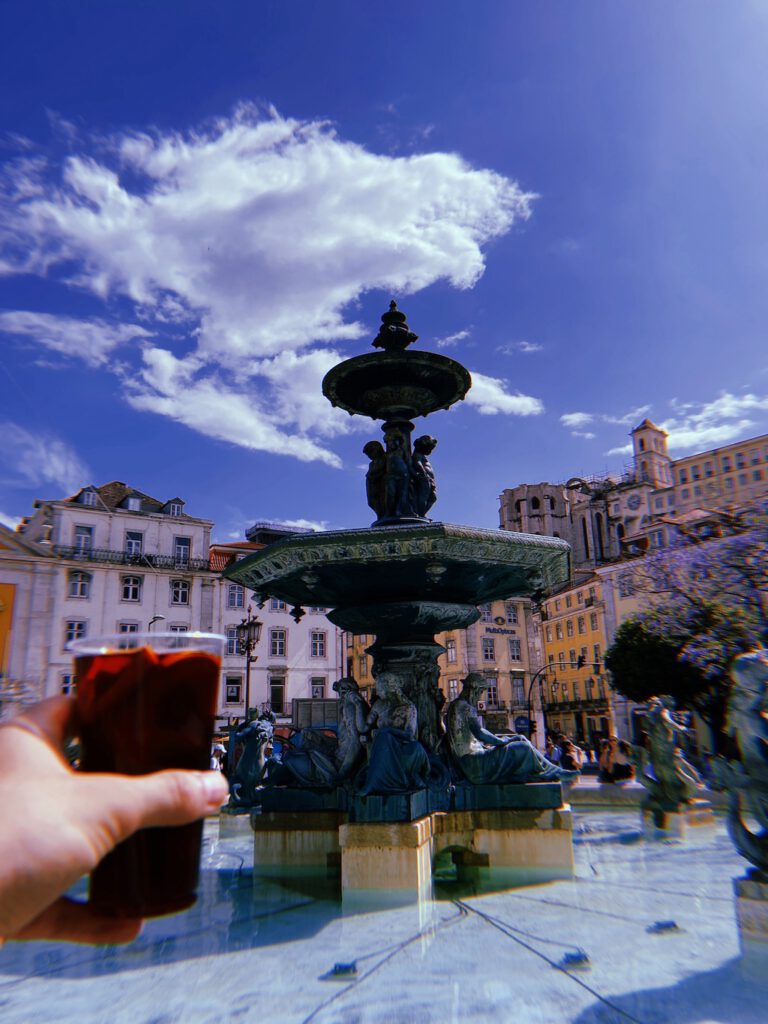
https://www.adbaixapombalina.pt/rossio-spring-market.html
Feira livro lisboa 2023 at Parque Eduardo VII
The Parque Eduardo,situated in the heart of Lisbon, is a large park to get some rest from the city. Named after King Edward VII of the United Kingdom, this park spans over 26 hectares and offers visitors a tranquil oasis with breathtaking views and well-manicured gardens.
As i went there, the Feiro livro lisboa 2023 took place. A lot of stands sell books from different authors. Furthermore you can buy some food and drinks.
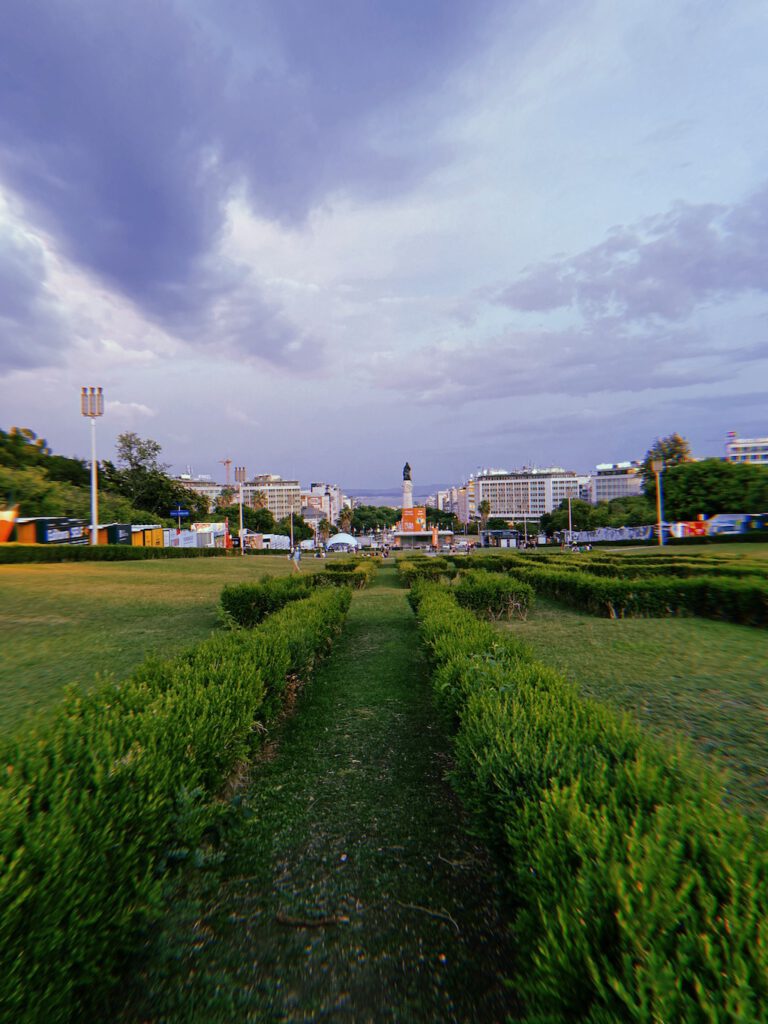
https://feiradolivrodelisboa.pt
Museum
Museu Banksy Lisbon
If you like the art of Banksy, here you can find some of it. It costs you only a few euros and you get some impressions of the variety of his art. You can find more than 100 reproductions of Banksy’s artwork through video installations, graffiti, canvases, projections and murals.




Beach
Praia de Carcavelos
Praia de Carcavelos is a captivating beach nestled along the picturesque coastline of Lisbon, Portugal. With its golden sands stretching over 1.5 kilometers, this renowned beach offers a perfect blend of natural beauty, recreational activities, and a vibrant beach culture.
Located just a short distance away from the heart of Lisbon, Praia de Carcavelos is easily accessible, making it a popular destination for locals and tourists alike. The beach boasts excellent amenities and facilities, ensuring a comfortable and enjoyable experience for visitors.

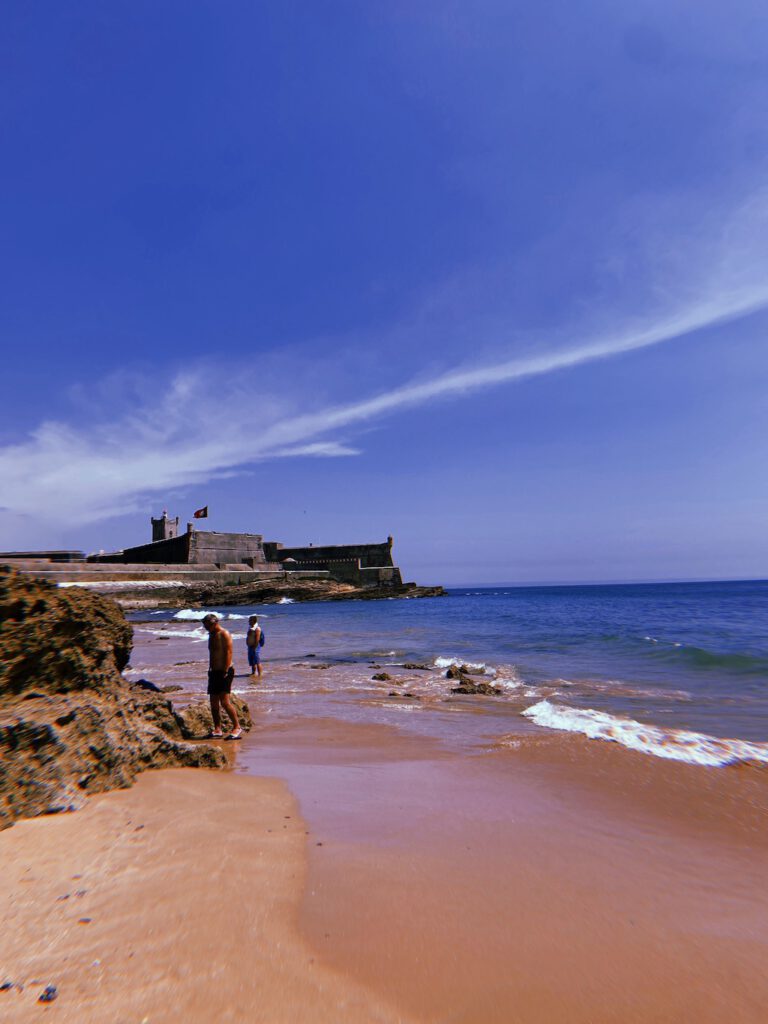
Because it´s reachable by train i decided to go this beach, but I also recommend the bigger Costa da Caparica.
Costa da Caparica
Costa da Caparica, located just a short distance from Lisbon, Portugal, is a captivating coastal destination that offers a delightful escape from the bustling city. With its pristine beaches, picturesque landscapes, and vibrant beach culture, Costa da Caparica beckons both locals and tourists alike.
The beach town exudes a laid-back and welcoming atmosphere. It is a popular destination for surfers, as the consistent waves attract both beginners and seasoned riders. Surf schools and rental shops are readily available, making it an ideal place to learn or improve your surfing skills.
Nightlive
Pub Crawl at district Bairro Alto (Praca Luis de Caoes)
The district of Bairro Alto in Lisbon, Portugal, is renowned for its vibrant and lively nightlife scene. This historic neighborhood transforms as the sun sets, with its narrow streets coming alive with music, laughter, and a contagious energy that draws both locals and visitors seeking an unforgettable night out.
Bairro Alto’s nightlife reputation is built upon its numerous bars, pubs, and clubs that line its streets. Live music also plays a significant role in Bairro Alto’s nightlife.
Sports / Cycling
I did a bike ride of about 10 km along the river in Lisbon. Therefore I rent a E-Bike (from Bolt). You can find E-Bikes, E-Scooters and normal Bikes around the Piers at the River.
I started my tour at the Terreiro do Paço and cycled to the east (until the Fábrica do Braço de Prata). Here you get a different view of the city. Another good tour would be to the west in direction of the Belem tower.
Turim Terreiro do Paço, Lisbon, Lisbon 1100-231, Portugal
Fábrica do Braço de Prata, R. Fábrica de Material de Guerra, 1, Lisbon, Lisbon 1950-088, Portugal
Torre de Belém, Av. da Índia, Lisbon, Lisbon 1400-038, Portugal
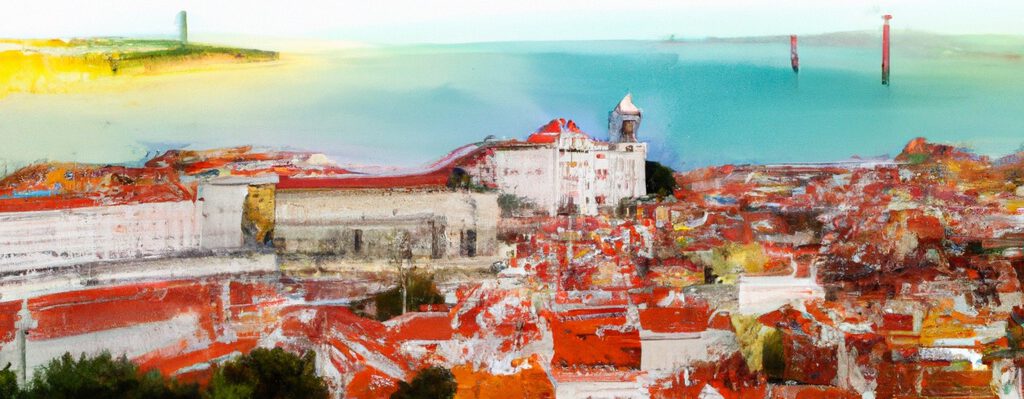
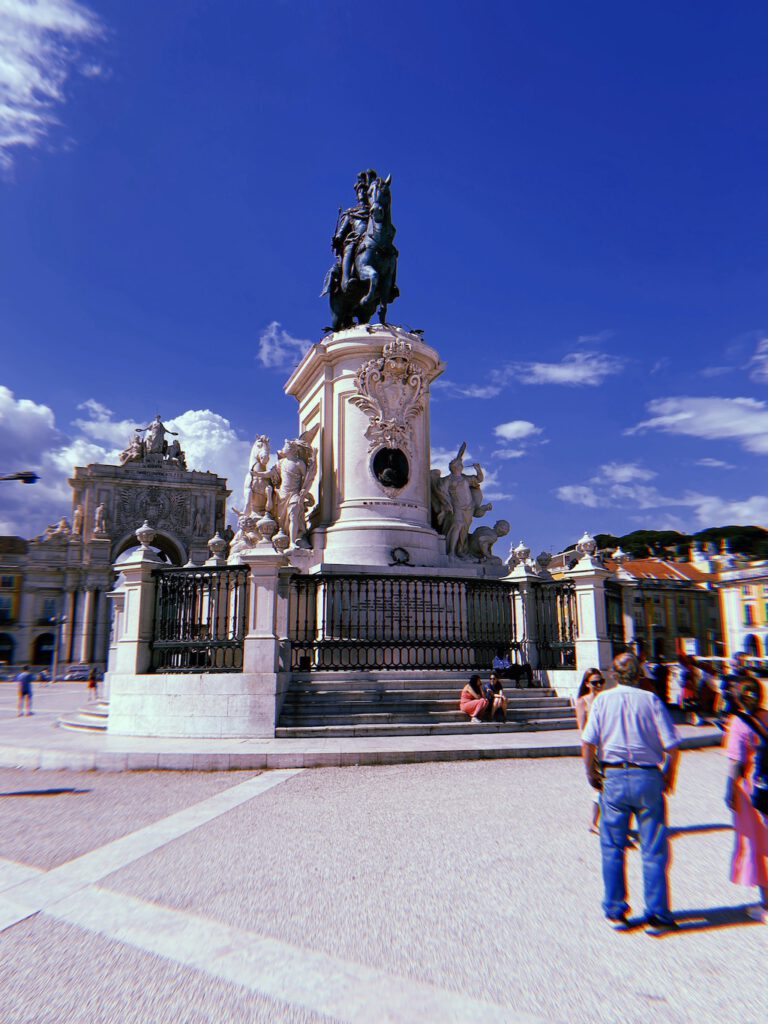
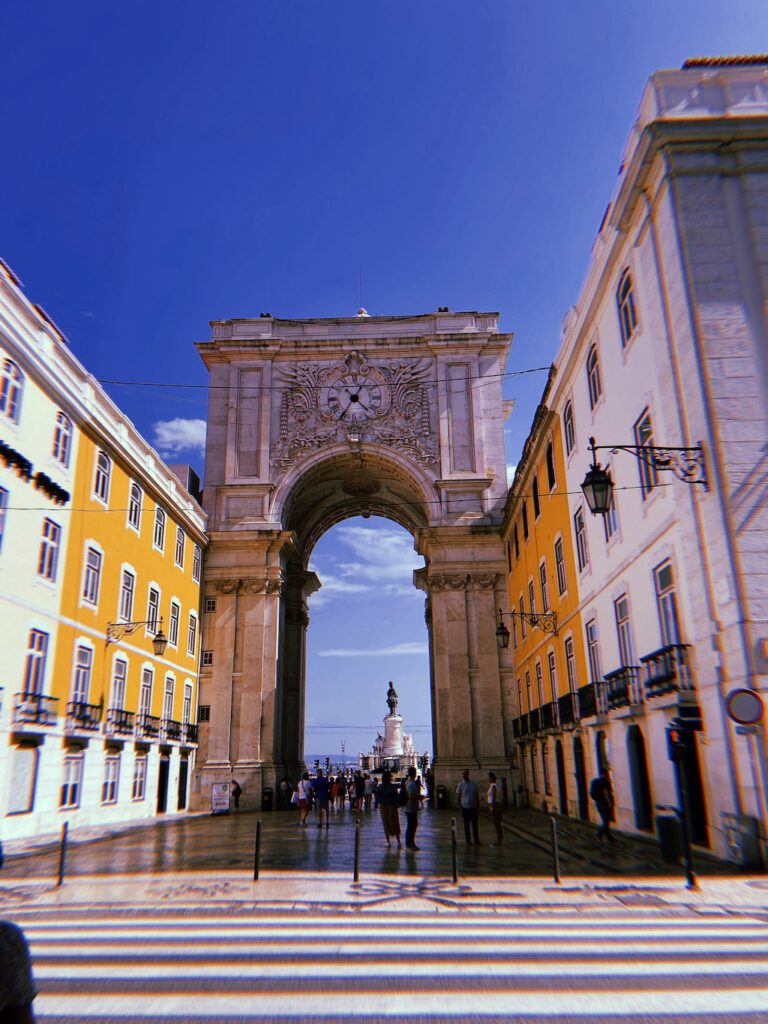
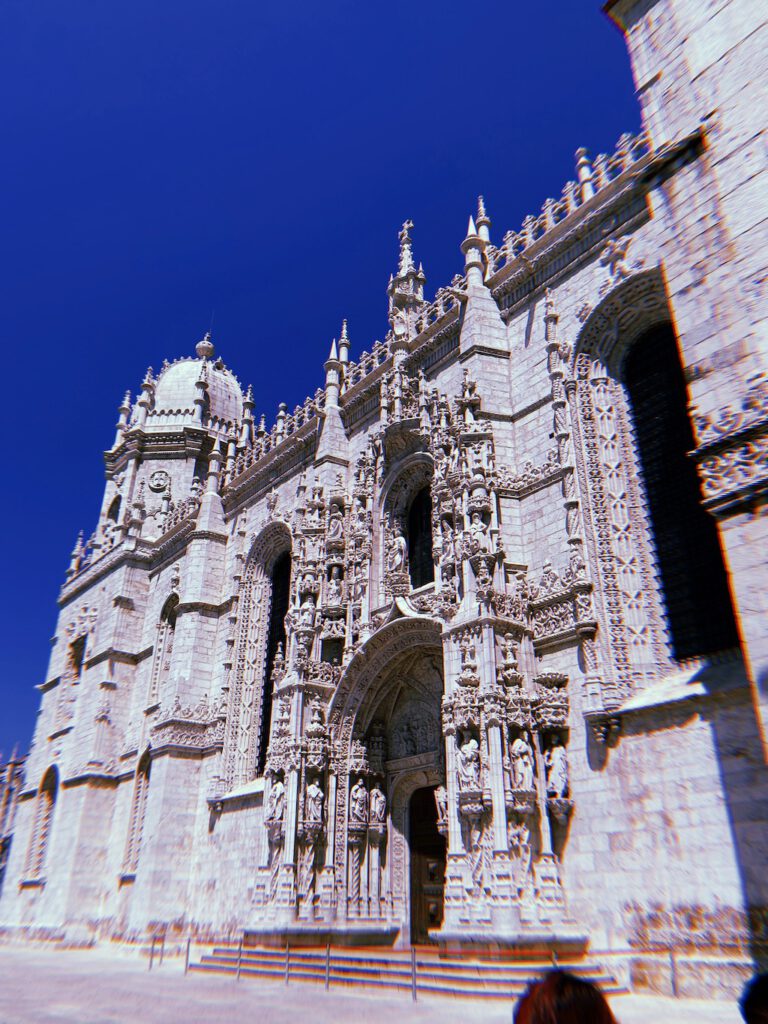
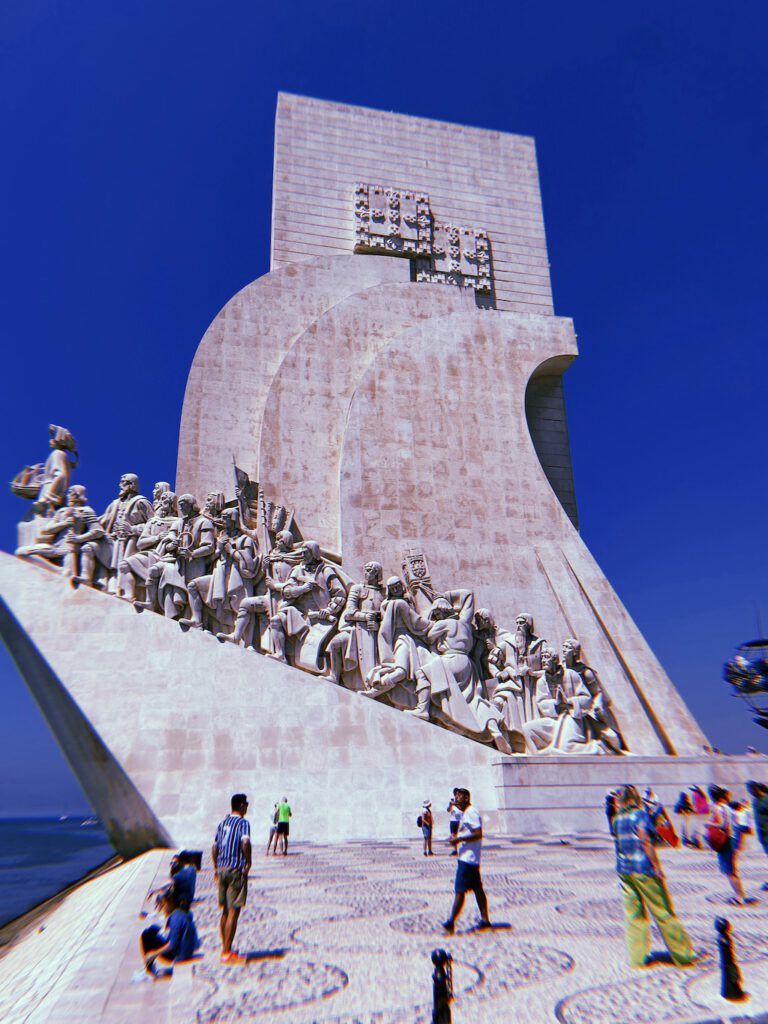
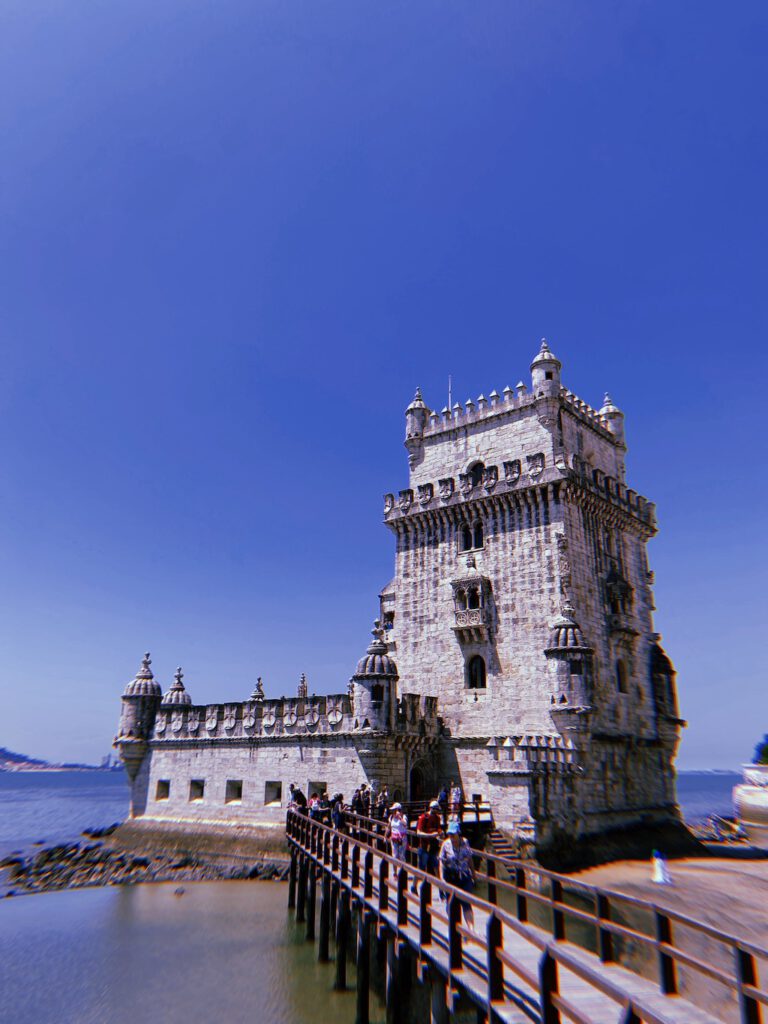
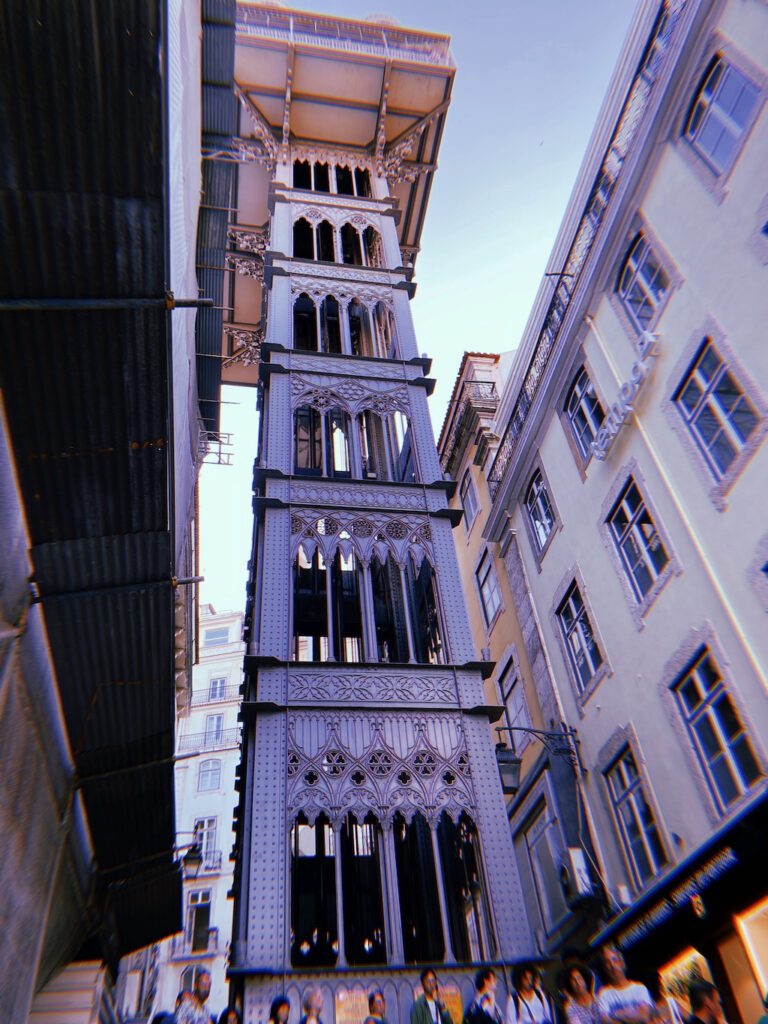
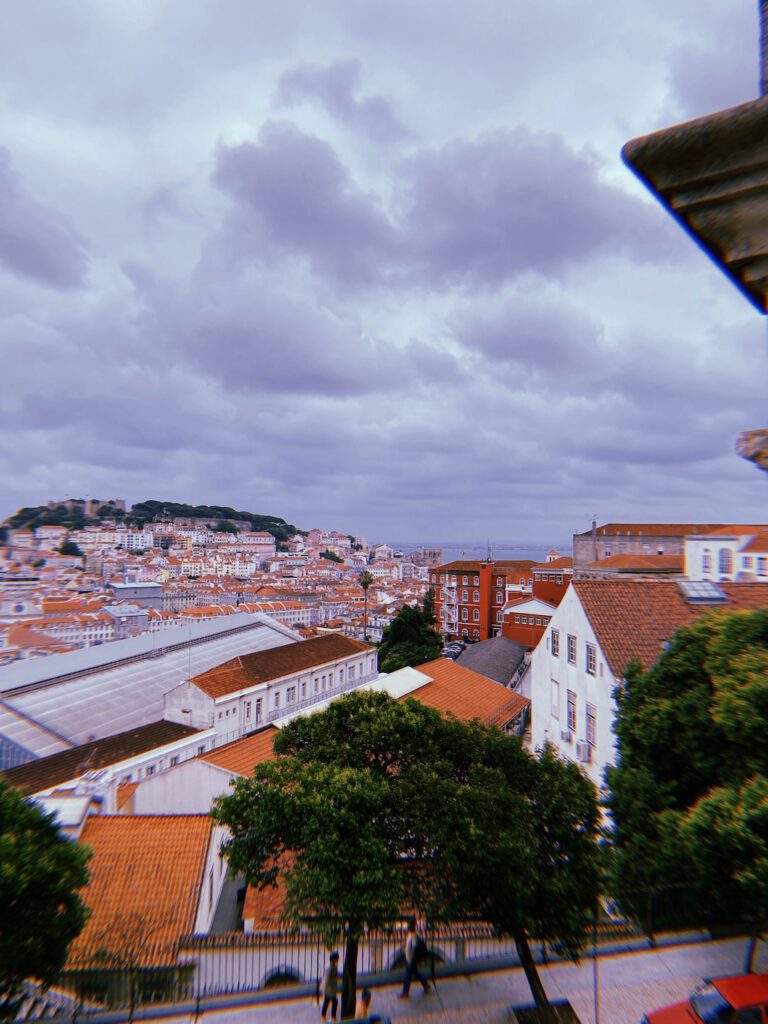
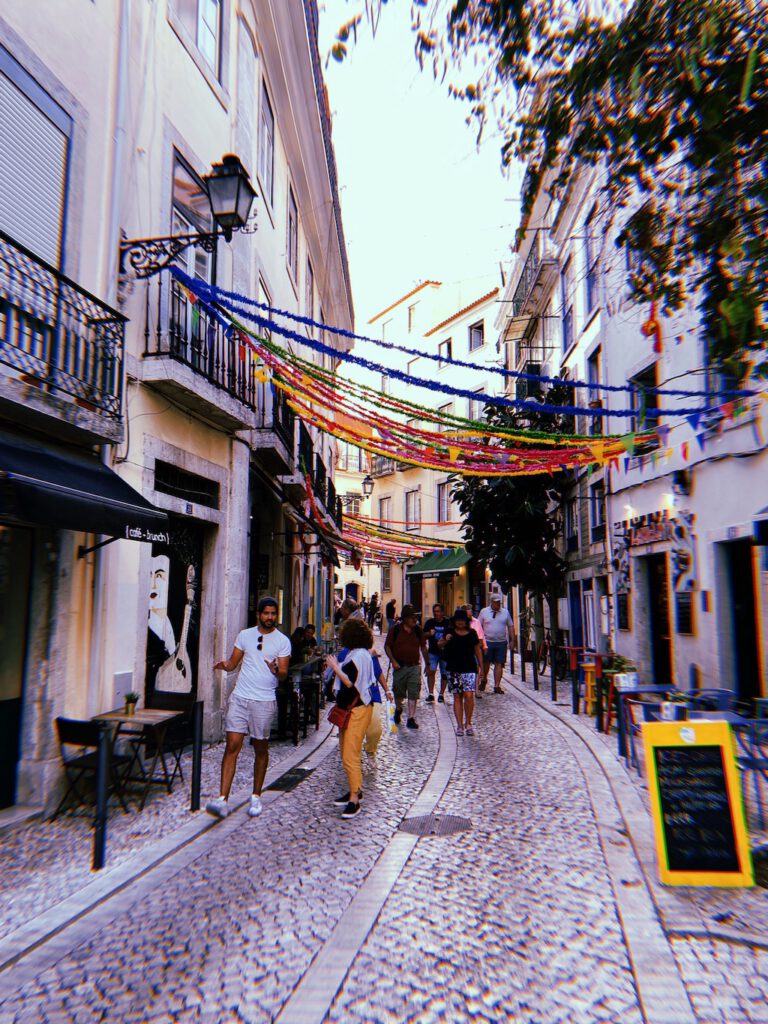
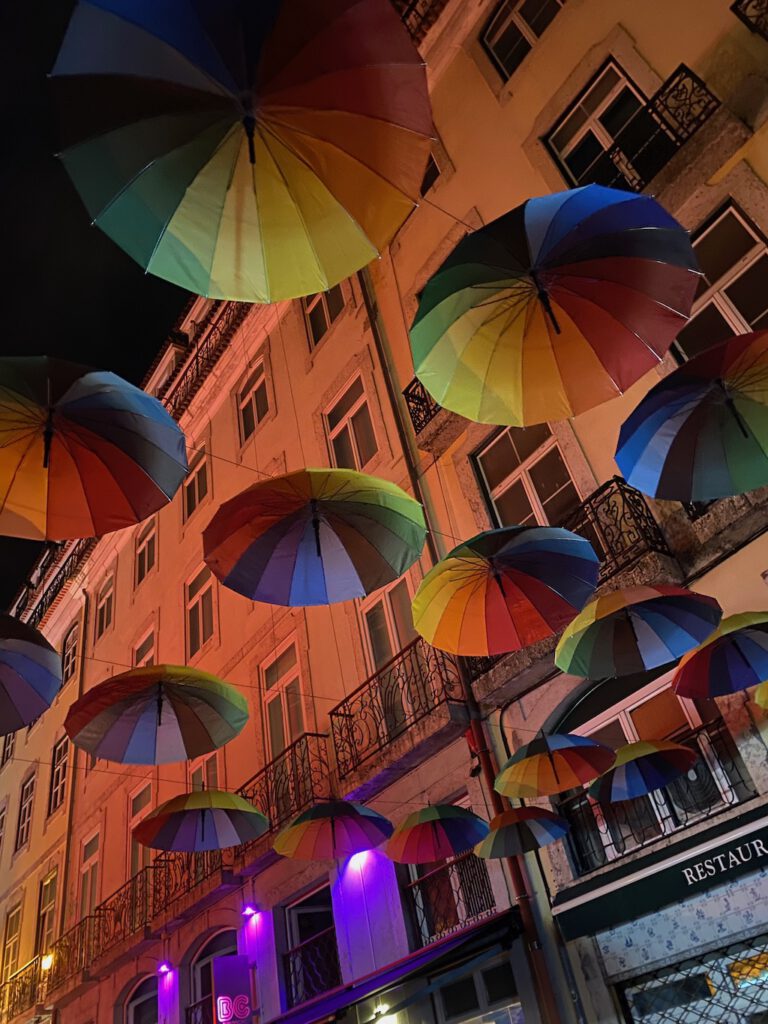
Leave a Reply